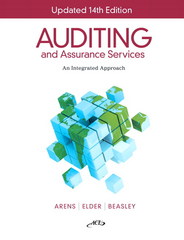Answered step by step
Verified Expert Solution
Question
1 Approved Answer
Hello, If you could please check my work and find what I am doing wrong, that would be greatly appreciated. As you can see, my
Hello, 








Chemalite, Inc. In late 1974, Mr. Bennett Alexander, a consulting chemical engineer, applied for and was successful in receiving a patent for one of his inventions, a "Chemalite." A small fragile, glass vial of one chemical was inserted into a plastic, translucent cylinder which was then filled with a the cylinder the glass vial inside broke second chemical and sealed. By bending yellowlgreen glow first chemical When combined, the two chemicals gave off a bright Mr. Alexander anticipated a substantial market for the Chemalite. It had the appeal of but yet did not require any form of ignition. He anticipated a considerable demand from the Armed Forces and manufacturers of flares and similar safety equipment. The Start-up Period: January 2 through June 30, 1975 On January 2, 1975, Mr. Alexander together with a number of relatives and friends established Chemalite, Inc. One hundred thousand shares were sold to the investors at $1 per share. During the period January 2, 1975 through June 30, 1975, Chemalite, Inc. made the following expenditures. January 3, 1975 Purchased the patent on the "Chemalite" from Mr. Alexander for $25,000 2. January 15, 1975 Paid $1,800 legal fees, charter costs and printing expenses all associated with the incorporation of the company Spent $12,500 to acquire, develop and test machinery which June 1975 would ultimately be used to produce the first commercial models of the Chemalite Purchased $15,000 worth of plastics and chemicals for use June 24, 1975 in the production of commercial "Chemalites. Towards the end of June, Mr. Alexander, who had assumed a very active role in the management of Chemalite, Inc. up to that point, met with the rest of the stockholders to present This classic case was originally prepared at the Harvard Business School by Visiting Professor David A. Wilson. It has been revised by Professors Robert M. Bowen and Glenn M. Pfeiffer as a basis for class discussion rather than to illustrate either effective or ineffective handling of a managerial situation. The comments of Jane Kennedy Jollineau are appreciated. Revised August 2004. Chemalite, Inc. In late 1974, Mr. Bennett Alexander, a consulting chemical engineer, applied for and was successful in receiving a patent for one of his inventions, a "Chemalite." A small fragile, glass vial of one chemical was inserted into a plastic, translucent cylinder which was then filled with a the cylinder the glass vial inside broke second chemical and sealed. By bending yellowlgreen glow first chemical When combined, the two chemicals gave off a bright Mr. Alexander anticipated a substantial market for the Chemalite. It had the appeal of but yet did not require any form of ignition. He anticipated a considerable demand from the Armed Forces and manufacturers of flares and similar safety equipment. The Start-up Period: January 2 through June 30, 1975 On January 2, 1975, Mr. Alexander together with a number of relatives and friends established Chemalite, Inc. One hundred thousand shares were sold to the investors at $1 per share. During the period January 2, 1975 through June 30, 1975, Chemalite, Inc. made the following expenditures. January 3, 1975 Purchased the patent on the "Chemalite" from Mr. Alexander for $25,000 2. January 15, 1975 Paid $1,800 legal fees, charter costs and printing expenses all associated with the incorporation of the company Spent $12,500 to acquire, develop and test machinery which June 1975 would ultimately be used to produce the first commercial models of the Chemalite Purchased $15,000 worth of plastics and chemicals for use June 24, 1975 in the production of commercial "Chemalites. Towards the end of June, Mr. Alexander, who had assumed a very active role in the management of Chemalite, Inc. up to that point, met with the rest of the stockholders to present This classic case was originally prepared at the Harvard Business School by Visiting Professor David A. Wilson. It has been revised by Professors Robert M. Bowen and Glenn M. Pfeiffer as a basis for class discussion rather than to illustrate either effective or ineffective handling of a managerial situation. The comments of Jane Kennedy Jollineau are appreciated. Revised August 2004 If you could please check my work and find what I am doing wrong, that would be greatly appreciated. As you can see, my balance sheet assets do not equal my liabilities plus shareholders' equity. I have a feeling it's because of transactions a-e and/or incorrect entries on the income statement. Additionally, the statement of cash flows I prepared was 100 percent correct. I will include all the necessary pictures bellow.
Additionally, the last time I posted the same question, the answer given was incorrect. Therefore, please be thorough in your reply. Thank you very much in advance for your understanding and help. Truly, you are a lifesaver.









Step by Step Solution
There are 3 Steps involved in it
Step: 1

Get Instant Access to Expert-Tailored Solutions
See step-by-step solutions with expert insights and AI powered tools for academic success
Step: 2

Step: 3

Ace Your Homework with AI
Get the answers you need in no time with our AI-driven, step-by-step assistance
Get Started


